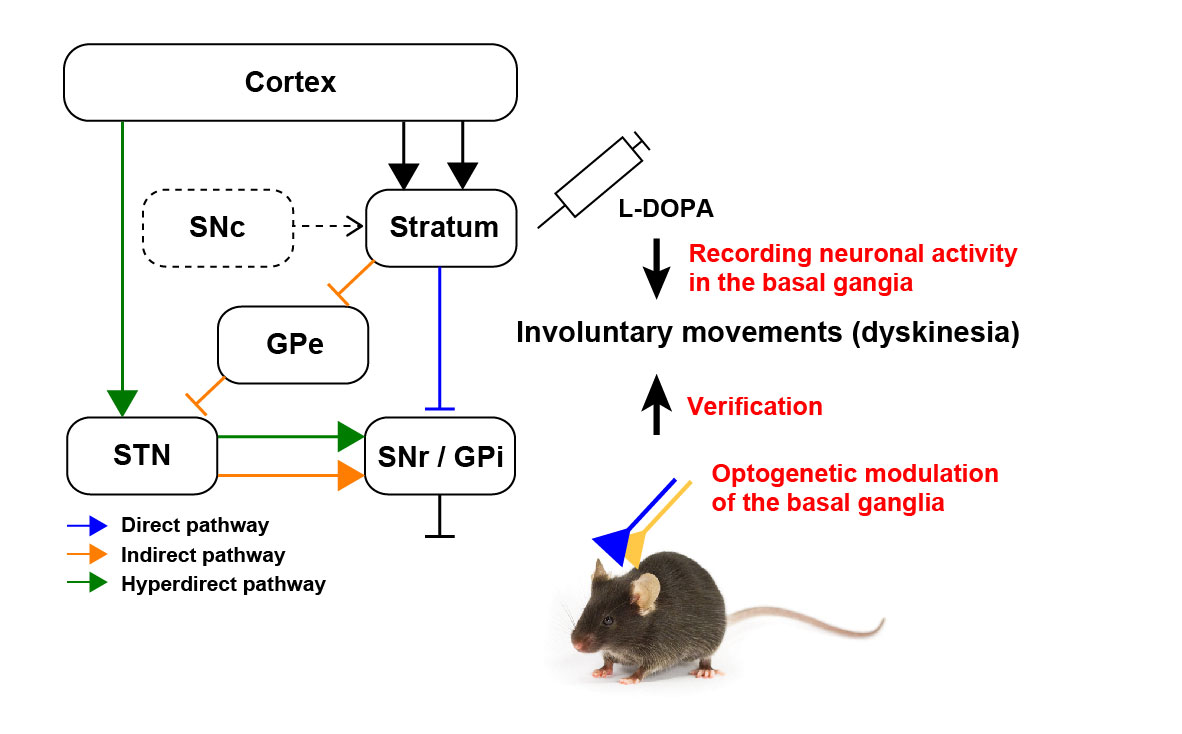Hiromi Sano (National Institute for Physiological Sciences)

“Relation between change of the neuronal circuit and involuntary movements in neurodegenerative disorders of the basal ganglia”
Movement disorders such as Parkinson’s disease (PD), Huntington’s disease and dystonia are caused by neurodegeneration in the basal ganglia. In the basal ganglia, there are three pathways, i.e., direct, indirect and hyperdirect pathway. These pathways connect the cortex and output nuclei of the basal ganglia, and play important roles in motor control. We have recorded neuronal activities in the basal ganglia to clarify the mechanisms of motor control by the basal ganglia. It is also important to investigate pathophysiology in movement disorders to establish the therapy.
PD is a neurodegenerative disorder characterized by the progressive loss of nigrostriatal dopaminergic neurons. The loss of dopaminergic neurons in the substantia nigra pars compacta (SNc) induces motor dysfunction, including resting tremor, rigidity, bradykinesia. These symptoms in PD can be treated by dopamine precursor L-DOPA. However long-term L-DOPA treatment induces motor complication, L-DOPA induced dyskinesia.
In this project, we induce dyskinesia in PD model mice and record neuronal activity in the basal ganglia before and after appearance of dyskinesia. We also modulate neuronal activity in the basal ganglia by using optogenetics and observe whether involuntary movements, such as dyskinesia are induced. In addition, we recover the neuronal activity in dyskinesia to normal state by optogenetic modulation and observe whether involuntary movements are disappeared. These studies will reveal the relation between neuronal activity and involuntary movements in L-DOPA induced dyskinesia.
Recent Publications
1. Sano H, Murata M, Nambu A (2015) Zonisamide reduces nigrostriatal dopaminergic neurodegeneration in a mouse genetic model of Parkinson’s disease. J Neurochem134(2):371-81.
2. Sano H, Chiken S, Hikida T, Kobayashi K, Nambu A (2013) Signals through the striatopallidal indirect pathway stop movements by phasic excitation in the substantia nigra. J Neurosci. 33(17):7583-94.
3. Bepari AK, Sano H, Tamamaki N, Nambu A, Tanaka KF, Takebayashi H (2012) Identification of optogenetically activated striatal medium spiny neurons by Npas4 expression. PLoS One 7(12):e52783.
4. Tanaka KF, Matsui K, Sasaki T, Sano H, Sugio S, Fan K, Hen R, Nakai J, Yanagawa Y, Hasuwa H, Okabe M, Deisseroth K, Ikenaka K, Yamanaka A (2012) Expanding the repertoire of optogenetically targeted cells with an enhanced gene expression system. Cell Rep 2(2):397-406.
Posted:2016/03/10

